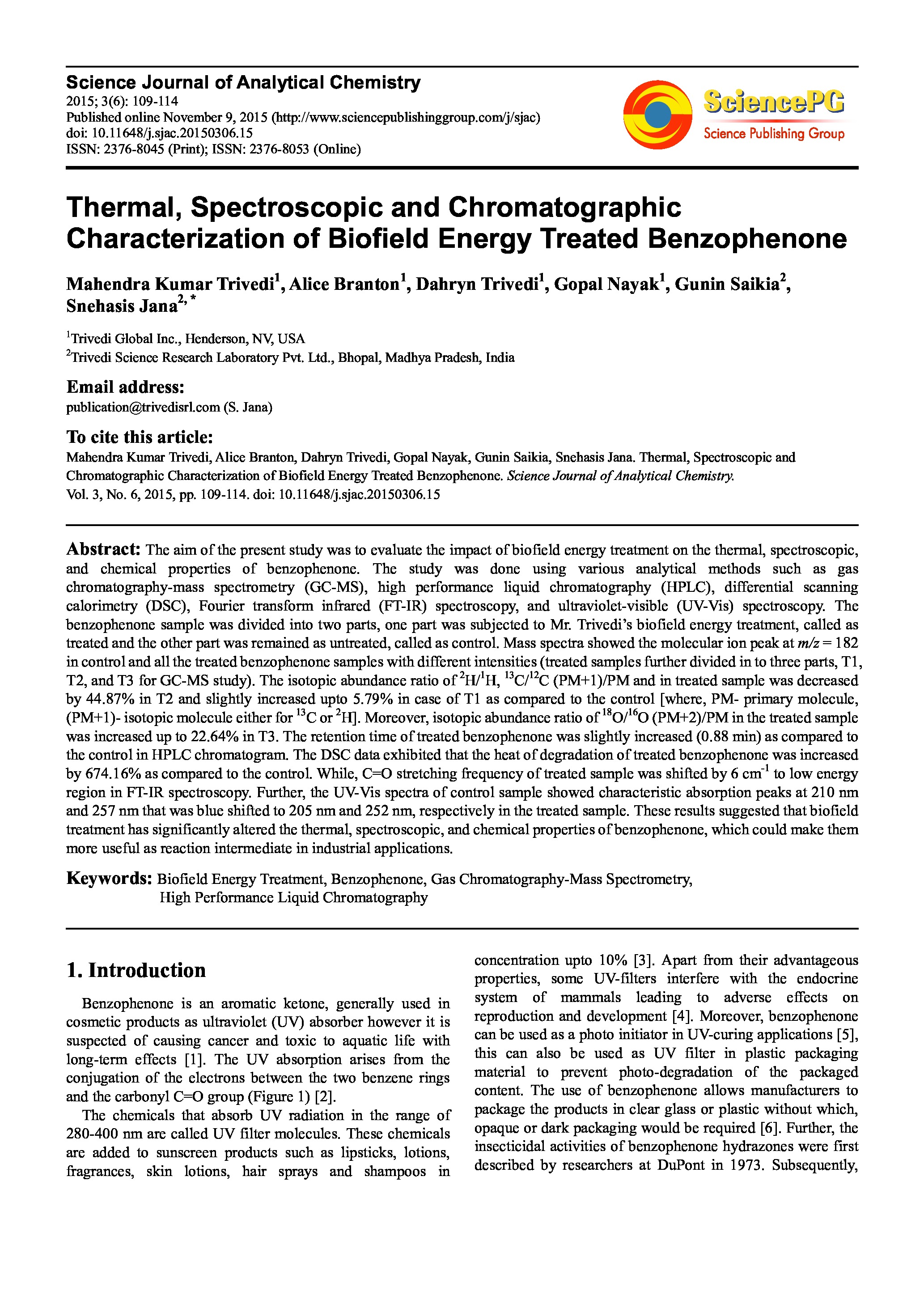Thermal, Spectroscopic and Chromatographic Characterization of Biofield Energy Treated Benzophenone
Affiliation
Trivedi Global Inc.; Trivedi Science Research Laboratory Pvt. Ltd.
Main category
Natural Sciences (Analytical Chemistry, Method Development (Chemistr)
Abstract
The aim of the present study was to evaluate the impact of biofield energy treatment on the thermal, spectroscopic, and chemical properties of benzophenone. The study was done using various analytical methods such as gas chromatography-mass spectrometry (GC-MS), high performance liquid chromatography (HPLC), differential scanning calorimetry (DSC), Fourier transform infrared (FT-IR) spectroscopy, and ultraviolet-visible (UV-Vis) spectroscopy. The benzophenone sample was divided into two parts, one part was subjected to Mr. Trivedi’s biofield energy treatment, called as treated and the other part was remained as untreated, called as control. Mass spectra showed the molecular ion peak at m/z = 182 in control and all the treated benzophenone samples with different intensities (treated samples further divided in to three parts, T1, T2, and T3 for GC-MS study). The isotopic abundance ratio of 2H/1H, 13C/12C (PM+1)/PM and in treated sample was decreased by 44.87% in T2 and slightly increased upto 5.79% in case of T1 as compared to the control [where, PM- primary molecule, (PM+1)- isotopic molecule either for 13C or 2H]. Moreover, isotopic abundance ratio of 18O/16O (PM+2)/PM in the treated sample was increased up to 22.64% in T3. The retention time of treated benzophenone was slightly increased (0.88 min) as compared to the control in HPLC chromatogram. The DSC data exhibited that the heat of degradation of treated benzophenone was increased by 674.16% as compared to the control. While, C=O stretching frequency of treated sample was shifted by 6 cm-1 to low energy region in FT-IR spectroscopy. Further, the UV-Vis spectra of control sample showed characteristic absorption peaks at 210 nm and 257 nm that was blue shifted to 205 nm and 252 nm, respectively in the treated sample. These results suggested that biofield treatment has significantly altered the thermal, spectroscopic, and chemical properties of benzophenone, which could make them more useful as reaction intermediate in industrial applications.
DOI
10.18147/smn.2017/paper:427
Do you have problems viewing the pdf-file? Download paper
here
If the paper contains inappropriate content, please
report the paper. You will be redirected to the landing page.
